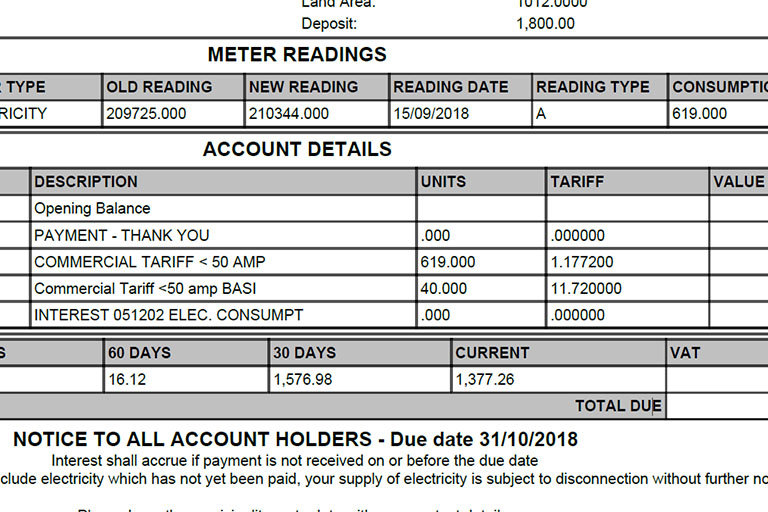There are times when electrical Wattage values need to be put in monetary values. Here we show why and how.
Table of contents
Introduction
There are some times in life when decisions are based on the cost of running electrical devices. Comparative decisions based on, for example, wattage alone are easy, but what about putting those values into actual money value?
Common electrical devices include light bulbs, cell phones, hairdryers, kettles, etc. These devices need electricity to function. So for this post, electricity (or electrical energy) will refer to the type of energy consumed by electrical devices to function. This electricity has to come from somewhere and commonly costs money to generate. For this post, South African Rands (R) and cents (c) were used.
Voltage and Amperage
Whether the amount of electricity consumption is large or small, it is broken down into voltage (V) and amperage (A – the unit for current). Common voltages used today are 220V and 110V in wall sockets and 12V, 9V, 5V, and 3.3V in power supplies and batteries. Common amperages seen are in the range of 15 – 30A for wall sockets and the range of 0.125A (125 mA) to 4A for smaller electronic devices.
Watts
Although some commercial electrical devices might already have a power consumption rating (expressed as watts) indicated on a label somewhere, this value can also be obtained by multiplying the voltage and amperage values together. For example, a 220V device consuming 10A needs 220 x 10 = 2 200 watts of energy, or simply written as 2 200 W or 2.2kW. This means that if this device is turned on for 1 hour, it will consume 2 200 watt-hours (2.2kW hours).
Electricity tariff
When looking at your local municipal electricity bill, the electricity tariff will be indicated in kW hours. In the example below, tariffs are given for basic consumption and for commercial use. Because the basic tariff is generally exceeded, the commercial tariff should be used.
Taking the example above, with an example tariff of R1.177200/kW hour, the device will cost 2.2kW hours x 1.177200 giving a rounded R2.59 to run for 1 hour.
Smaller devices, let’s say a 5V cell phone charger running at a full 1.5A, will consume 7.5W, which is 0.0075kW. If it takes your cell phone an hour to charge, it will cost 0.008c. Similarly, a 15W light bulb will cost 0.0175c to burn for an hour.
Conclusion
Common electrical devices are light bulbs, cell phones, hairdryers, kettles, etc. Their electrocity consumption in Watt can be converted into costs.


